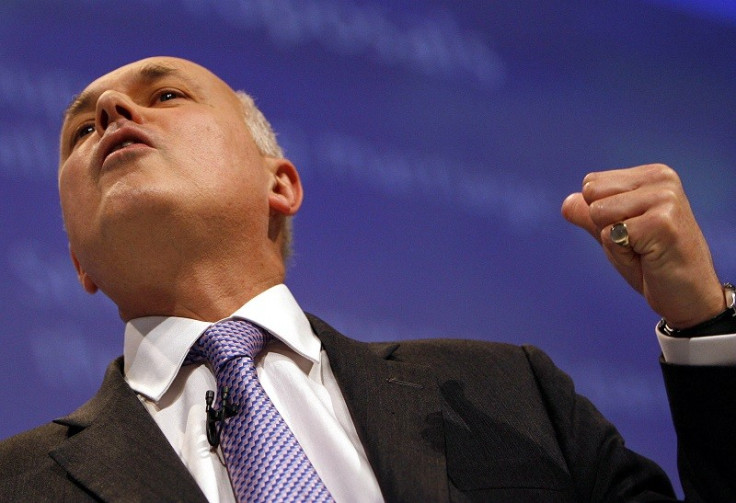Iain Duncan Smith's Benefit Cap Hits More Than 8,000 Households

The UK government's benefit cap has hit more than 8,000 household since its introduction, according to official figures.
The measure, which came into force in some authorities on 15 April, means that working age households cannot receive more than £500 a week in benefits.
The Department for Work & Pensions revealed that almost 8,400 households had their housing benefit capped between April and August.
More than three quarters (77%) of those affected lost up to £100 a week under the new rules, according to the research.
The limit, introduced by Secretary of State for Work & Pensions Iain Duncan Smith, is designed to make sure that households on out-of-work benefits will no longer receive more in welfare payments than the average weekly wage for working households.
It applies to the combined income from benefits, including housing benefit, child benefit and child tax credits, among others.
But households which include someone who is entitled to working tax credits are excluded from the cap.
Also households with someone, including a child, with a current award of disability living allowance, personal independence payment or attendance allowance, or receiving the support component of employment and support allowance or industrial injuries benefits (and those receiving war disablement pension and the equivalent payments from the Armed Forces Compensation Payments Scheme) are exempt from the benefit cap.
The report coincided with the news that the government has helped around 16,500 benefit recipients identified as being potentially affected by the new benefit cap into work, according the DWP.
The official figures also revealed that the Jobcentre Plus has seen 35,600 recipients accept an offer of employment support.
© Copyright IBTimes 2025. All rights reserved.






















